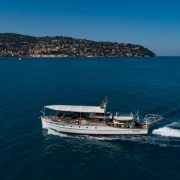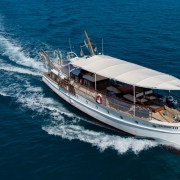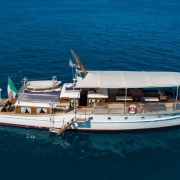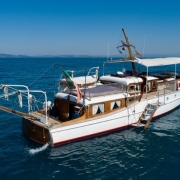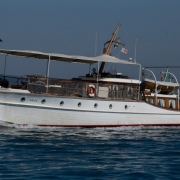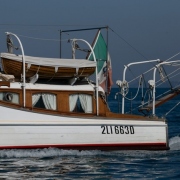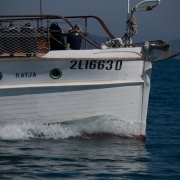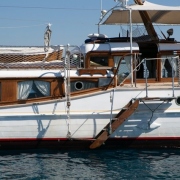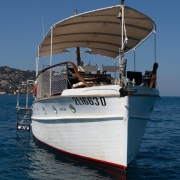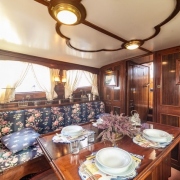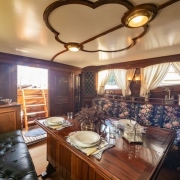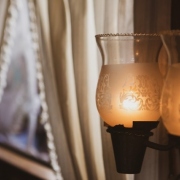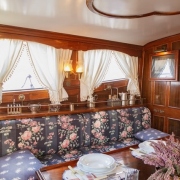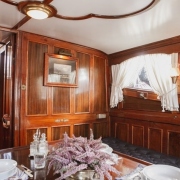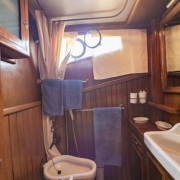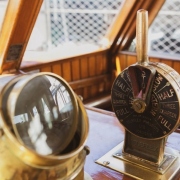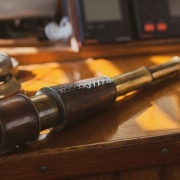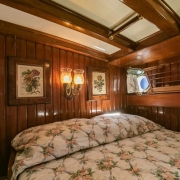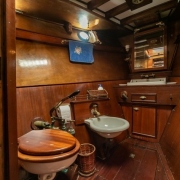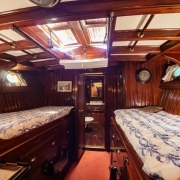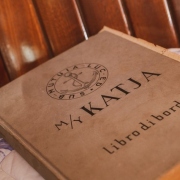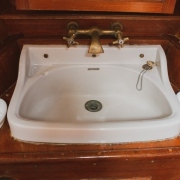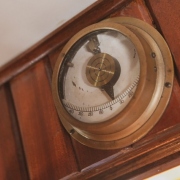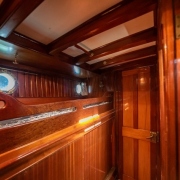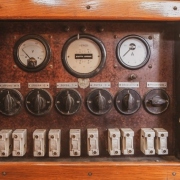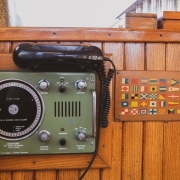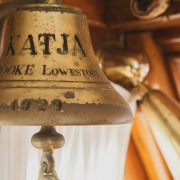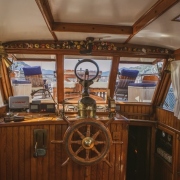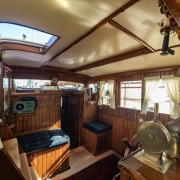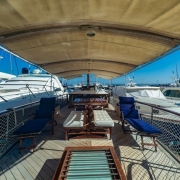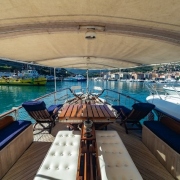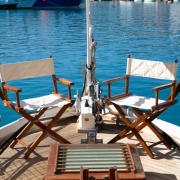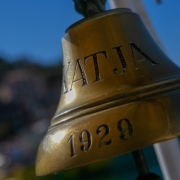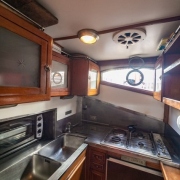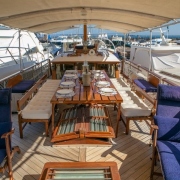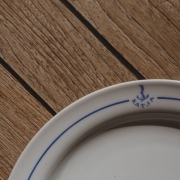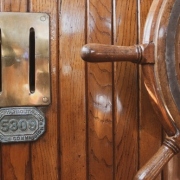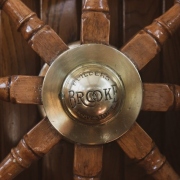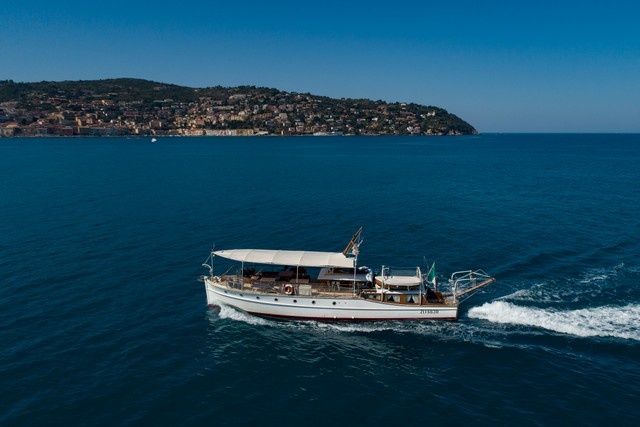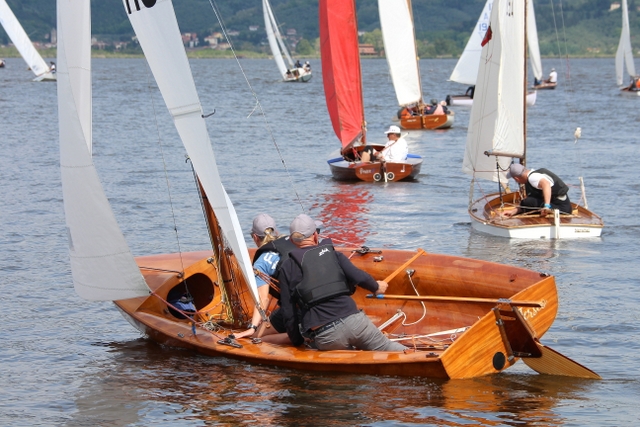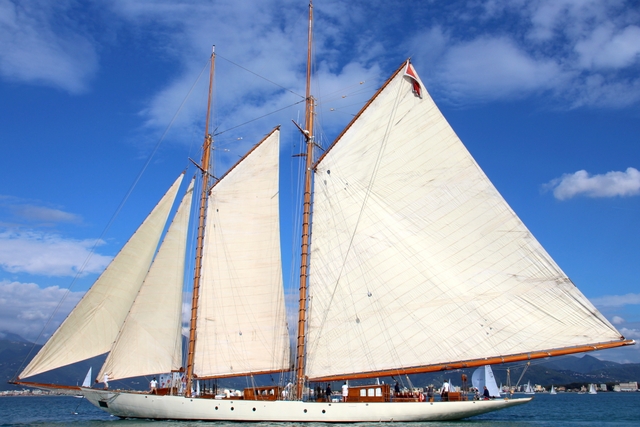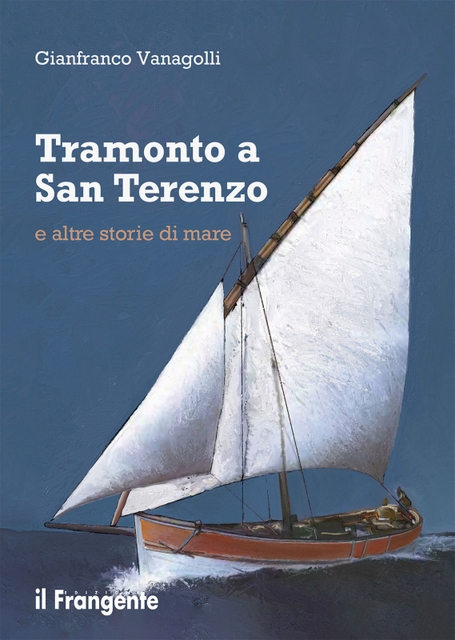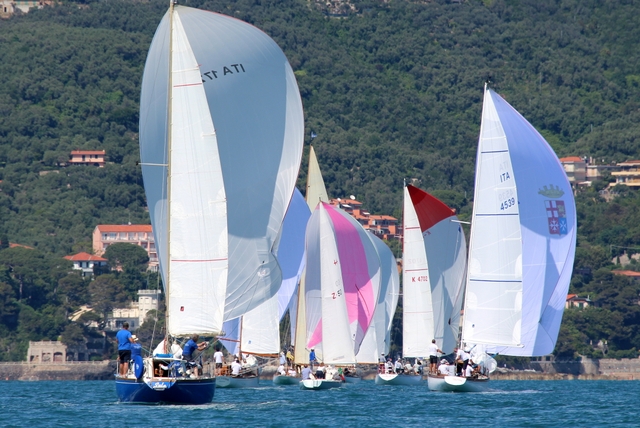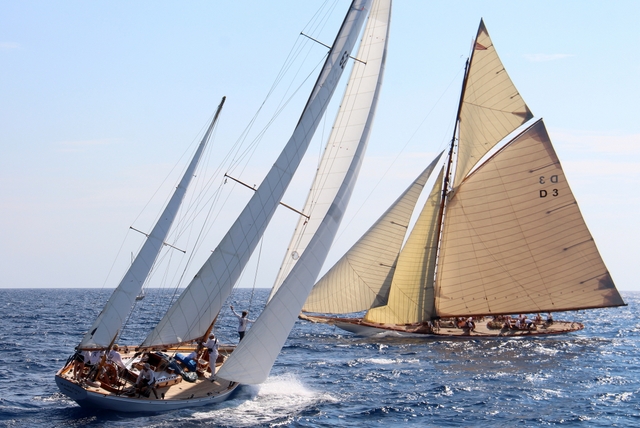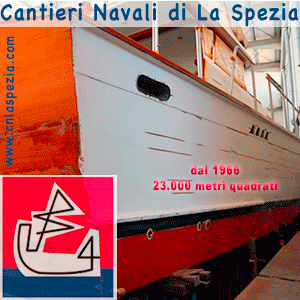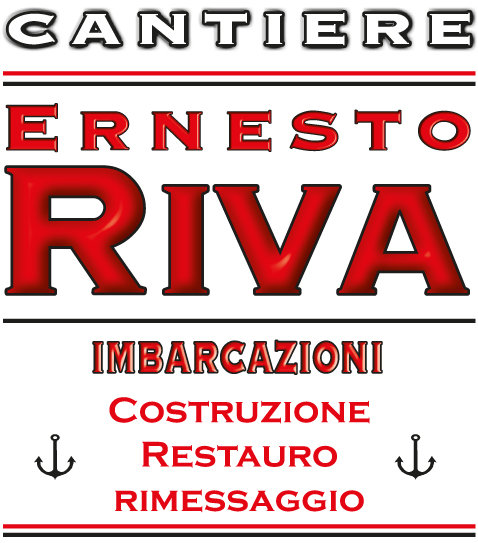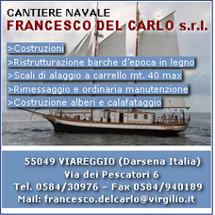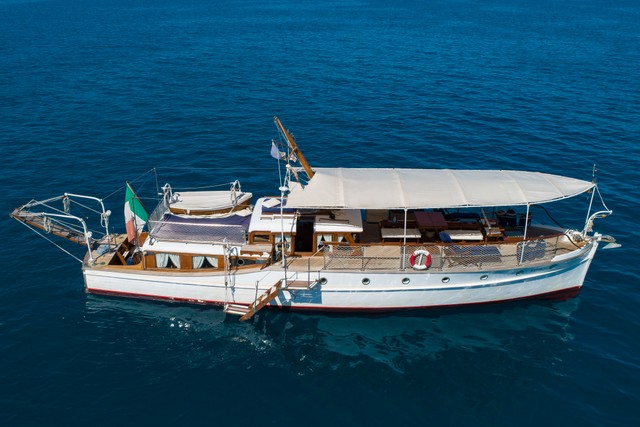 È stato varato nel 1929 in Inghilterra dal cantiere Brooke di Lowestoft e dopo essere giunto in Mediterraneo attraverso i canali della Francia ha navigato ininterrottamente fino ai nostri giorni dimostrandosi un formidabile yacht adatto alla crociera famigliare. Il motoryacht in legno Katja (14,70 mt), sottoposto a un recente restauro, è oggi alla ricerca di un nuovo armatore che, oltre a prendersene cura, persegua l’obiettivo di fargli raggiungere un secolo di vita sul mare. Attualmente Katja naviga nella zona del medio e alto Tirreno.
È stato varato nel 1929 in Inghilterra dal cantiere Brooke di Lowestoft e dopo essere giunto in Mediterraneo attraverso i canali della Francia ha navigato ininterrottamente fino ai nostri giorni dimostrandosi un formidabile yacht adatto alla crociera famigliare. Il motoryacht in legno Katja (14,70 mt), sottoposto a un recente restauro, è oggi alla ricerca di un nuovo armatore che, oltre a prendersene cura, persegua l’obiettivo di fargli raggiungere un secolo di vita sul mare. Attualmente Katja naviga nella zona del medio e alto Tirreno.
Di Paolo Maccione – Luglio 2020
Foto di Paolo Maccione e Archivio M/Y Katja
ITALIAN / ENGLISH TEXT
INVIA UN SMS A +39 335 7526690 PER CONOSCERE IL PREZZO
KATJA 1929, IL VIDEO
KATJA, DALL’INGHILTERRA AL MEDITERRANEO 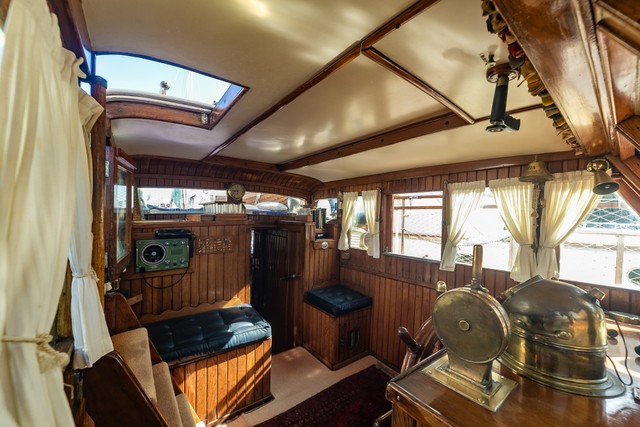 È stata varata in Inghilterra il 15 agosto 1929, anno della Grande depressione americana e del crollo di Wall Street, cause di una grave crisi economica e finanziaria che investì anche l’Europa. È sopravvissuta alle devastazioni della Seconda Guerra Mondiale e ha fatto parte delle oltre 800 imbarcazioni private che contribuirono alla storica Operazione Dynamo, l’imponente evacuazione navale dalle spiagge di Dunkirk che rimpatriò in Inghilterra centinaia di migliaia di soldati britannici circondati dall’esercito tedesco. Il motoryacht Katja, lungo 14,70 metri, costruito in legno dal cantiere inglese Brooke di Lowestoft su progetto di H. Parker, è giunto intatto fino ai nostri giorni grazie alle cure dei quattro proprietari che si sono avvicendati nel corso dei decenni, due inglesi e due italiani. L’ultimo in ordine di tempo è un armatore romano, proprietario di Katja a partire dall’inizio degli anni Novanta.
È stata varata in Inghilterra il 15 agosto 1929, anno della Grande depressione americana e del crollo di Wall Street, cause di una grave crisi economica e finanziaria che investì anche l’Europa. È sopravvissuta alle devastazioni della Seconda Guerra Mondiale e ha fatto parte delle oltre 800 imbarcazioni private che contribuirono alla storica Operazione Dynamo, l’imponente evacuazione navale dalle spiagge di Dunkirk che rimpatriò in Inghilterra centinaia di migliaia di soldati britannici circondati dall’esercito tedesco. Il motoryacht Katja, lungo 14,70 metri, costruito in legno dal cantiere inglese Brooke di Lowestoft su progetto di H. Parker, è giunto intatto fino ai nostri giorni grazie alle cure dei quattro proprietari che si sono avvicendati nel corso dei decenni, due inglesi e due italiani. L’ultimo in ordine di tempo è un armatore romano, proprietario di Katja a partire dall’inizio degli anni Novanta.
LA STORIA DI KATJA 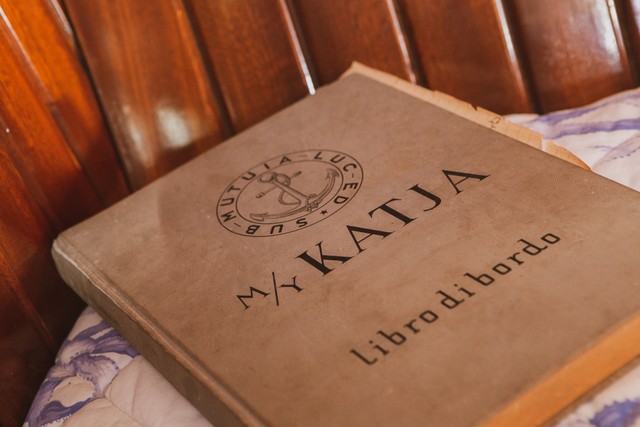 Katja era stata costruita per Mawdesley Brooke, proprietario del cantiere di Lowestoft che varò la barca nel 1929 chiamandola con il nome di una delle sue figlie. Il cantiere affonda le proprie radici nel 1874, quando nacque come fabbrica di motori, si chiamava Brooke Ironworks e operava in località Oulton Broad, presso Lowestoft. Tra le due guerre fu adottato il nome di Brooke Motorcraft e venne gestito da Waveney Brooke fin dopo la Seconda Guerra Mondiale. La prima motorizzazione di Katja era costituita da un propulsore diesel Brooke n° 4059 6 cilindri tipo 40 F da 100 hp e da un “Dominion” Brooke da 5 hp come motore ausiliario. Nel 1931 lo yacht venne venduto ad un armatore di Leicester per 2.875 sterline. Per un certo periodo fece base a Great Yarmouth, località a 200 chilometri a nord est di Londra distante appena 15 chilometri da Lowestoft, finchè nel 1950 attraversò i canali francesi e giunse in Mediterraneo battendo la bandiera militare inglese per il contributo fornito in occasione della ritirata da Dunkirk. Abbandonate le brumose coste inglesi Katja cominciò a godere del clima mite del Mare Nostrum. Nel 1967 venne installata una nuova motorizzazione Perkins T6354 da 145 hp, alla quale si affiancò un Mercedes da 30 hp come propulsore ausiliario. Dall’inizio degli anni Novanta Katja venne acquistata da nuovo armatore romano che la fece navigare soprattutto in Tirreno con base a Porto Santo Stefano, in Toscana, e partecipare ai raduni di barche d’epoca di Bocca di Magra, Montecarlo, La Spezia e Anzio.
Katja era stata costruita per Mawdesley Brooke, proprietario del cantiere di Lowestoft che varò la barca nel 1929 chiamandola con il nome di una delle sue figlie. Il cantiere affonda le proprie radici nel 1874, quando nacque come fabbrica di motori, si chiamava Brooke Ironworks e operava in località Oulton Broad, presso Lowestoft. Tra le due guerre fu adottato il nome di Brooke Motorcraft e venne gestito da Waveney Brooke fin dopo la Seconda Guerra Mondiale. La prima motorizzazione di Katja era costituita da un propulsore diesel Brooke n° 4059 6 cilindri tipo 40 F da 100 hp e da un “Dominion” Brooke da 5 hp come motore ausiliario. Nel 1931 lo yacht venne venduto ad un armatore di Leicester per 2.875 sterline. Per un certo periodo fece base a Great Yarmouth, località a 200 chilometri a nord est di Londra distante appena 15 chilometri da Lowestoft, finchè nel 1950 attraversò i canali francesi e giunse in Mediterraneo battendo la bandiera militare inglese per il contributo fornito in occasione della ritirata da Dunkirk. Abbandonate le brumose coste inglesi Katja cominciò a godere del clima mite del Mare Nostrum. Nel 1967 venne installata una nuova motorizzazione Perkins T6354 da 145 hp, alla quale si affiancò un Mercedes da 30 hp come propulsore ausiliario. Dall’inizio degli anni Novanta Katja venne acquistata da nuovo armatore romano che la fece navigare soprattutto in Tirreno con base a Porto Santo Stefano, in Toscana, e partecipare ai raduni di barche d’epoca di Bocca di Magra, Montecarlo, La Spezia e Anzio.
I RESTAURI E IL MASSIMO PUNTEGGIO DELLA VALUTAZIONE STORICA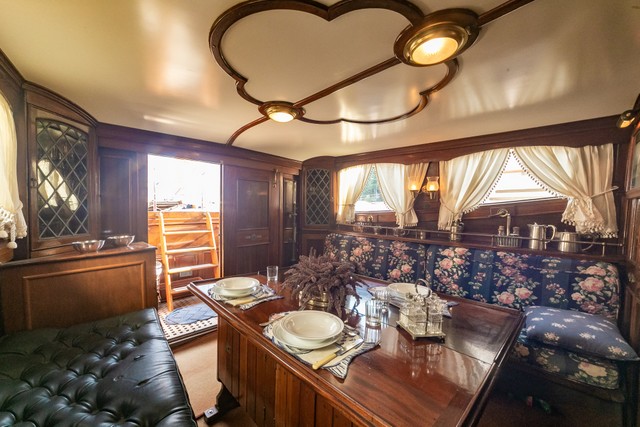 In epoca recente Katja è stata sottoposta ad una serie di lavori eseguiti dai cantieri toscani Lacchini e Mileo, quest’ultimo fondato da Costabile Mileo nel 1951 e un tempo soprannominato la “Fiat del mare” per via della sua incessante produzione di imbarcazioni in legno. Nel 2003 i titolari del cantiere di Porto Santo Stefano (GR), i fratelli Pompeo, Vincenzo e Domenico Mileo, hanno sostituito il fasciame dell’opera viva, costituito da tavole in pitch pine dello spessore di 25 millimetri e lunghezza compresa tra 8 e 9 metri, trattenuto alle ordinate di rovere con viteria in acciaio. Ricostruito anche il paramezzale, al fine di garantire una maggiore tenuta di una parte della nuova ossatura, incastrata sulla chiglia e sulla controruota di prua. Infine il calafataggio, eseguito con la tradizionale cotonina, cui è seguita l’operazione di stuccatura e verniciatura. Mantenuta la chiglia e il dritto di prua in quercia. Tra gli altri lavori la sostituzione della singola motorizzazione con un Perkins da 240 hp ed elica quadripala in grado di spingere Katja ad una velocità massima di 12 nodi, l’installazione del bow-thruster, il rifacimento della coperta in teak con interposto compensato, l’installazione di un nuovo impianto elettrico, idraulico e del carburante, la sostituzione del timone con un nuovo comando idraulico. Montata anche una timoneria mobile a distanza che permette di condurre Katja dall’esterno in navigazione, direttamente dal ponte di coperta. Oltre al motore principale è stato installato un secondo propulsore ausiliario Perkins da 80 hp, con elica a pale abbattibili e asse disassata sul lato sinistro, in grado di garantire comunque una velocità di crociera di 6 nodi. Tante attenzioni non potevano passare inosservate. Nel 1992, in occasione del raduno di barche d’epoca presso il Principato di Monaco, Katja consegue infatti un punteggio di 156/210 che gli vale il primo posto nella valutazione ASDEC, l’Associazione Scafi d’Epoca e Classici che dal 1987 preserva e diffonde la cultura delle imbarcazioni storiche.
In epoca recente Katja è stata sottoposta ad una serie di lavori eseguiti dai cantieri toscani Lacchini e Mileo, quest’ultimo fondato da Costabile Mileo nel 1951 e un tempo soprannominato la “Fiat del mare” per via della sua incessante produzione di imbarcazioni in legno. Nel 2003 i titolari del cantiere di Porto Santo Stefano (GR), i fratelli Pompeo, Vincenzo e Domenico Mileo, hanno sostituito il fasciame dell’opera viva, costituito da tavole in pitch pine dello spessore di 25 millimetri e lunghezza compresa tra 8 e 9 metri, trattenuto alle ordinate di rovere con viteria in acciaio. Ricostruito anche il paramezzale, al fine di garantire una maggiore tenuta di una parte della nuova ossatura, incastrata sulla chiglia e sulla controruota di prua. Infine il calafataggio, eseguito con la tradizionale cotonina, cui è seguita l’operazione di stuccatura e verniciatura. Mantenuta la chiglia e il dritto di prua in quercia. Tra gli altri lavori la sostituzione della singola motorizzazione con un Perkins da 240 hp ed elica quadripala in grado di spingere Katja ad una velocità massima di 12 nodi, l’installazione del bow-thruster, il rifacimento della coperta in teak con interposto compensato, l’installazione di un nuovo impianto elettrico, idraulico e del carburante, la sostituzione del timone con un nuovo comando idraulico. Montata anche una timoneria mobile a distanza che permette di condurre Katja dall’esterno in navigazione, direttamente dal ponte di coperta. Oltre al motore principale è stato installato un secondo propulsore ausiliario Perkins da 80 hp, con elica a pale abbattibili e asse disassata sul lato sinistro, in grado di garantire comunque una velocità di crociera di 6 nodi. Tante attenzioni non potevano passare inosservate. Nel 1992, in occasione del raduno di barche d’epoca presso il Principato di Monaco, Katja consegue infatti un punteggio di 156/210 che gli vale il primo posto nella valutazione ASDEC, l’Associazione Scafi d’Epoca e Classici che dal 1987 preserva e diffonde la cultura delle imbarcazioni storiche.
UNA TERRAZZA SUL MARE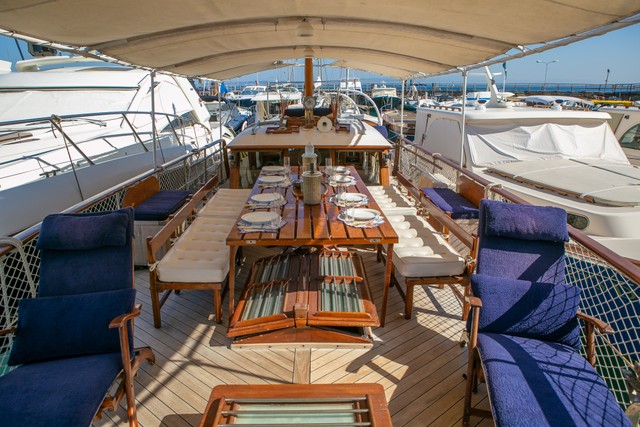 “L’opera morta ha una linea slanciata ed elegantissima: raccordi morbidi tra tughe e loro padiglioni, raccordo dolce tra i dislivelli delle coperte, finestrini della tuga di poppa che seguono la sinuosità dei passavanti, corrimano della battagliola che si abbassa verso prua, passafuori laterale che si ricurva sul tetto della tuga. Tutto denota l’esecuzione di un progetto ricercato da parte di un grande cantiere.” Così nei primi anni Novanta l’architetto milanese Piero Maria Gibellini, tra i massimi esperti mondiali di motoscafi e yacht a motore, scriveva di Katja. E oggi l’attuale armatore non può fare a meno di rimarcare quanto siano molto fruibili e ben separati gli spazi che possono essere goduti a bordo, anche in presenza di parecchi ospiti. La prua è una vera terrazza sul mare, vero punto di forza di Katja, che permette di godere di grande privacy in banchina, rinfrescati dalla brezza che soffia a prua anche nelle giornate più calde. Questa zona è coperta da un robusto tendalino e attrezzata con 2 chaise longue acquistate nei primi anni Novanta e un tempo imbarcate sul transatlantico Conte Biancamano (varato nel 1925 e demolito nel 1961), oltre a un tavolo e panchette per accogliere oltre dieci persone per pranzi all’aperto. Due cuscinerie prendisole sono inoltre fruibili sul cielo della tuga poppiera e su quello della timoneria. Infine la presenza di una scala reale sul lato di dritta, comoda e sicura per agevolare la discesa a mare.
“L’opera morta ha una linea slanciata ed elegantissima: raccordi morbidi tra tughe e loro padiglioni, raccordo dolce tra i dislivelli delle coperte, finestrini della tuga di poppa che seguono la sinuosità dei passavanti, corrimano della battagliola che si abbassa verso prua, passafuori laterale che si ricurva sul tetto della tuga. Tutto denota l’esecuzione di un progetto ricercato da parte di un grande cantiere.” Così nei primi anni Novanta l’architetto milanese Piero Maria Gibellini, tra i massimi esperti mondiali di motoscafi e yacht a motore, scriveva di Katja. E oggi l’attuale armatore non può fare a meno di rimarcare quanto siano molto fruibili e ben separati gli spazi che possono essere goduti a bordo, anche in presenza di parecchi ospiti. La prua è una vera terrazza sul mare, vero punto di forza di Katja, che permette di godere di grande privacy in banchina, rinfrescati dalla brezza che soffia a prua anche nelle giornate più calde. Questa zona è coperta da un robusto tendalino e attrezzata con 2 chaise longue acquistate nei primi anni Novanta e un tempo imbarcate sul transatlantico Conte Biancamano (varato nel 1925 e demolito nel 1961), oltre a un tavolo e panchette per accogliere oltre dieci persone per pranzi all’aperto. Due cuscinerie prendisole sono inoltre fruibili sul cielo della tuga poppiera e su quello della timoneria. Infine la presenza di una scala reale sul lato di dritta, comoda e sicura per agevolare la discesa a mare.
GLI INTERNI E IL TENDER DI BAGLIETTO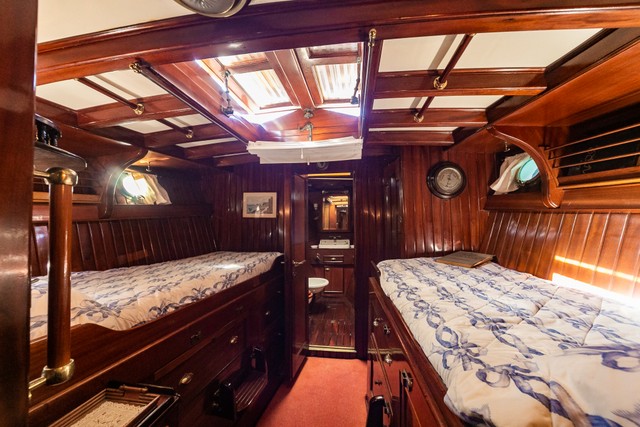 I raffinati interni di Katja ne fanno un motoryacht accogliente e confortevole. La ricercatezza nelle finiture, dalle boiserie alle vetrinette della dinette, dai dipinti e gouaches d’epoca presenti anche nella cabina armatoriale, richiamano ambientazioni da Orient Express e donano la sensazione di essere trasportati indietro nel tempo. Ben 7 i posti letto disponibili: due nella cabina armatoriale prodiera, due in una cabina separata per gli ospiti e tre ricavabili dalle sedute del quadrato poppiero (un matrimoniale + un letto singolo). Di grande fascino il tender ausiliario, una lancia in legno costruita nel 1934 dallo storico cantiere ligure Baglietto di Varazze, dotato di scalmi e remi originali. Ad esso è affiancato un gommone in dotazione, con fuoribordo da 9,9 hp.
I raffinati interni di Katja ne fanno un motoryacht accogliente e confortevole. La ricercatezza nelle finiture, dalle boiserie alle vetrinette della dinette, dai dipinti e gouaches d’epoca presenti anche nella cabina armatoriale, richiamano ambientazioni da Orient Express e donano la sensazione di essere trasportati indietro nel tempo. Ben 7 i posti letto disponibili: due nella cabina armatoriale prodiera, due in una cabina separata per gli ospiti e tre ricavabili dalle sedute del quadrato poppiero (un matrimoniale + un letto singolo). Di grande fascino il tender ausiliario, una lancia in legno costruita nel 1934 dallo storico cantiere ligure Baglietto di Varazze, dotato di scalmi e remi originali. Ad esso è affiancato un gommone in dotazione, con fuoribordo da 9,9 hp.
KATJA - La scheda tecnica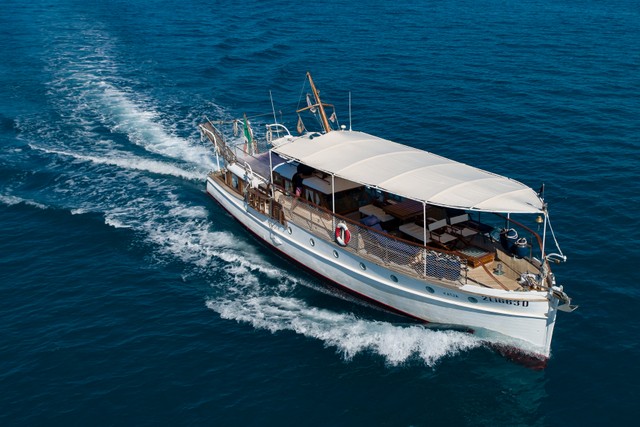
Anno varo / Year launch: 1929
Cantiere / Shipyard: Brooke (Lowestoft – UK)
Progetto / Naval Architect: H. Parker (UK)
Materiale / Material: Legno / Wood
Lunghezza f.t. / LOA: 14,70 mt.
Larghezza / Beam: 3,28 mt.
Pescaggio / Draft: 1,40 mt.
Dislocamento / Displacement: 16,13 tons
Stazza lorda / Gross Tonnage: 23,72 tons
Motorizzazione principale / Engine: Perkins 240 hp (176,62 Kw)
Motorizzazione ausiliaria / Aux engine: Perkins 80 hp (58,84 Kw)
Serbatoi gasolio / Fuel: 1.000 lt
Serbatoi acqua / Water: 1.200 lt
Velocità max / Max speed: 12 knots
Velocità di crociera / Cruising speed: 10 knots
Nr. Cabine / Cabins: 2
Totale posti letto / Total berths: 4 + 3
Bagni / Toilet: 2
Tender: Baglietto wooden dinghy 1934
GALLERY
INFORMAZIONI
Invia un sms al numero +39 335 7526690 per richiedere il prezzo di questa imbarcazione
ENGLISH TEXT
The English vintage motoryacht Katja celebrates her 90th birthday
Launched in 1929 from the Brooke shipyard in Lowestoft, after Dunkirk and the war she came to the Mediterranean through the French canals. Katja has sailed without interruption ever since, proving herself a wonderful yacht, perfect for family cruising. Recently restored, this fascinating wooden motoryacht (14,70 mt) is looking for a new owner who will agree to follow the present proprietor’s goal: to ensure that Katja will celebrate her 100th birthday in prime condition, at sea! Currently Katja cruises in the north and central Tyrrhenian Sea.
Please send a Text message for price inquiries
to +39 335 7526690
KATJA, FROM ENGLAND TO THE MEDITERRANEAN
Katja was launched in England on August 15th, 1929, the year of the Wall Street crash in America and the beginning of the Great Depression that was soon to assail Europe. She survived the destruction of the Second World War after taking part in Operation Dynamo as a Little Ship, one of the 800 civilian vessels that evacuated hundreds of thousands of Allied soldiers from Dunkirk in 1940. Katja is a 14.7 meter long motoryacht, designed by H. Parker and built of wood by the Brooke shipyard in Lowestoft. She is still in perfect condition thanks to the doting care of her four owners, two English and two Italian, the latest since the early 1990’s.
THE TALE OF KATJA
Katja was built for Mawdesley Brooke, the owner of the yard that launched her in 1929, and was named for one of his daughters. The yard’s roots stretch back to 1874 when Brooke Ironworks, specialized in engines, began activity in Oulton Broad, near Lowestoft. Renamed Brooke Motorcraft between the wars, the firm was managed by Waveney Brooke until after the end of World War II. Katja’s first main engine was a 100 hp, six cylinder Brooke N°4059 type 40 F diesel, with a 5 hp Brooke “Dominion” as auxiliary propulsion. In 1931 she was sold to a new owner in Leicester for £ 2,875. Based for a period in Great Yarmouth, 200 km north of London and only 15 km from Lowestoft, in 1950 she traveled through the French canals down to the Mediterranean, flying the white ensign as a Dunkirk Little Ship. Katja welcomed the change from the misty English coasts to the mild climate of the Mediterranean. In 1967 she was given a new main engine, a 145 hp Perkins T6354, and a new 30 hp Mercedes auxiliary. In the early 1990’s she was purchased by a new owner from Rome, who sailed her in the Tyrrhenian from Tuscany’s Porto Santo Stefano. Sailing from her new base, Katja participated in classic yacht events in Montecarlo, La Spezia, Bocca di Magra and Anzio.
REFITS AND AWARDS
In recent years Katja has undergone several refits in Tuscan yards; Lacchini, and then Mileo. Founded by Constabile Mileo in 1951, the Mileo yard was known for their continuous production of dozens of wooden vessels. In 2003 the yard, run by the Mileo brothers Pompeo, Vincenzo and Domenico, began a major refit. The 25mm pitch pine planking below the waterline was replaced, with 8/9 meter long planks attached to oak frames with steel screws. The keelson was rebuilt to increase purchase for elements of the new frames, tightly fit between the keel and the stem. The hull was caulked in the traditional manner with calico, then faired and painted. The keel and stem, both of oak, are original. A new main engine (Perkins 240hp) combined with a four-bladed propeller, gives Katja a top speed of 12 knots. Other major jobs included fitting a bow-thruster, rebuilding the teak deck incorporating a layer of plywood, redoing the hydraulic and electrical systems and fuel lines, and replacing the wheel with a new hydraulic control. Remote steering is also set up, allowing Katja to be run from on deck while underway. The auxiliary motor was upgraded to an 80hp Perkins, with a folding propellor to port, giving her a respectable six knots. All this care lavished on Katja couldn’t pass unnoticed, and during the 1992 Monaco Classic Week she was awarded 156 out of 210 possible points, putting her at the top of the ASDEC classification. The ‘Associazione Scafi d’Epoca e Classici’ has been protecting and diffusing the culture of classic and vintage yachting since 1987.
A TERRACE ON THE SEA
“Her topsides have sleek and very elegant lines - a gentle joining of the deckhouses to their pavilions, a smooth transition between deck levels, with the aft deckhouse windows that follow the sinuous curve of the sheer, the handrails that gradually run lower as they approach the bow and the side deck that curves towards the coachroof. It all denotes the execution of an excellent design by a renowned boatyard.” This quote from the early 1990’s by Piero Maria Gibellini, one of the world’s authorities on motor yachts and auxiliaries, refers to Katja. Her present owner, after almost thirty years of cruising Katja, cannot but emphasize how well laid out she is, with many separate spaces to enjoy even when there are many aboard. The foredeck is a terrace over the sea, one of her strongpoints. It gives privacy when moored stern to, and there’s always fresh air even on the hottest days. A sturdy awning covers the foredeck, with it’s two chaise longue (originally from the ocean liner Conte Biancamano; launched in 1925, she was sent to the wrecking yard in 1961), table and benches for up to ten guests. Two sun pads are laid above the aft coachroof and the wheelhouse. A true gangway is mounted to starboard, for ease of embarking and disembarking.
INTERIORS AND THE BAGLIETTO TENDER
Katja’s refined interiors make her a welcoming and comfortable yacht. The fine finishings, from the wainscoting to the cabin cabinetry, plus the paintings and vintage gouaches in the owner’s cabin, all combine to remind you of the Orient Express and send you back in time. She has seven berths: two in the owner’s cabin forward, two in the guest cabin, and three from the seating in the main cabin – one twin and one single berth. Katja’s vintage launch is a work of art. Built of wood in 1934 by the Baglietto yard in Varazze, she still has her original oars and oarlocks. Katja also comes with an inflatable with a 9.9 hp outboard.
KATJA - SPECS
Anno varo / Year launched: 1929
Cantiere / Shipyard: Brooke (Lowestoft – UK)
Progetto / Naval Architect: H. Parker (UK)
Materiale / Material: Legno / Wood
Lunghezza f.t. / LOA: 14,70 mt.
Larghezza / Beam: 3,28 mt.
Pescaggio / Draft: 1,40 mt.
Dislocamento / Displacement: 16,13 tons
Stazza lorda / Gross Tonnage: 23,72 tons
Motorizzazione principale / Engine: Perkins 240 hp (176,62 Kw)
Motorizzazione ausiliaria / Aux. engine: Perkins 80 hp (58,84 Kw)
Serbatoi gasolio / Fuel: 1.000 lt
Serbatoi acqua / Water: 1.200 lt
Velocità max / Max speed: 12 knots
Velocità di crociera / Cruising speed: 10 knots
Nr. Cabine / Cabins: 2
Totale posti letto / Total berths: 4 + 3
Bagni / Toilet: 2
Tender: Baglietto wooden dinghy 1934




